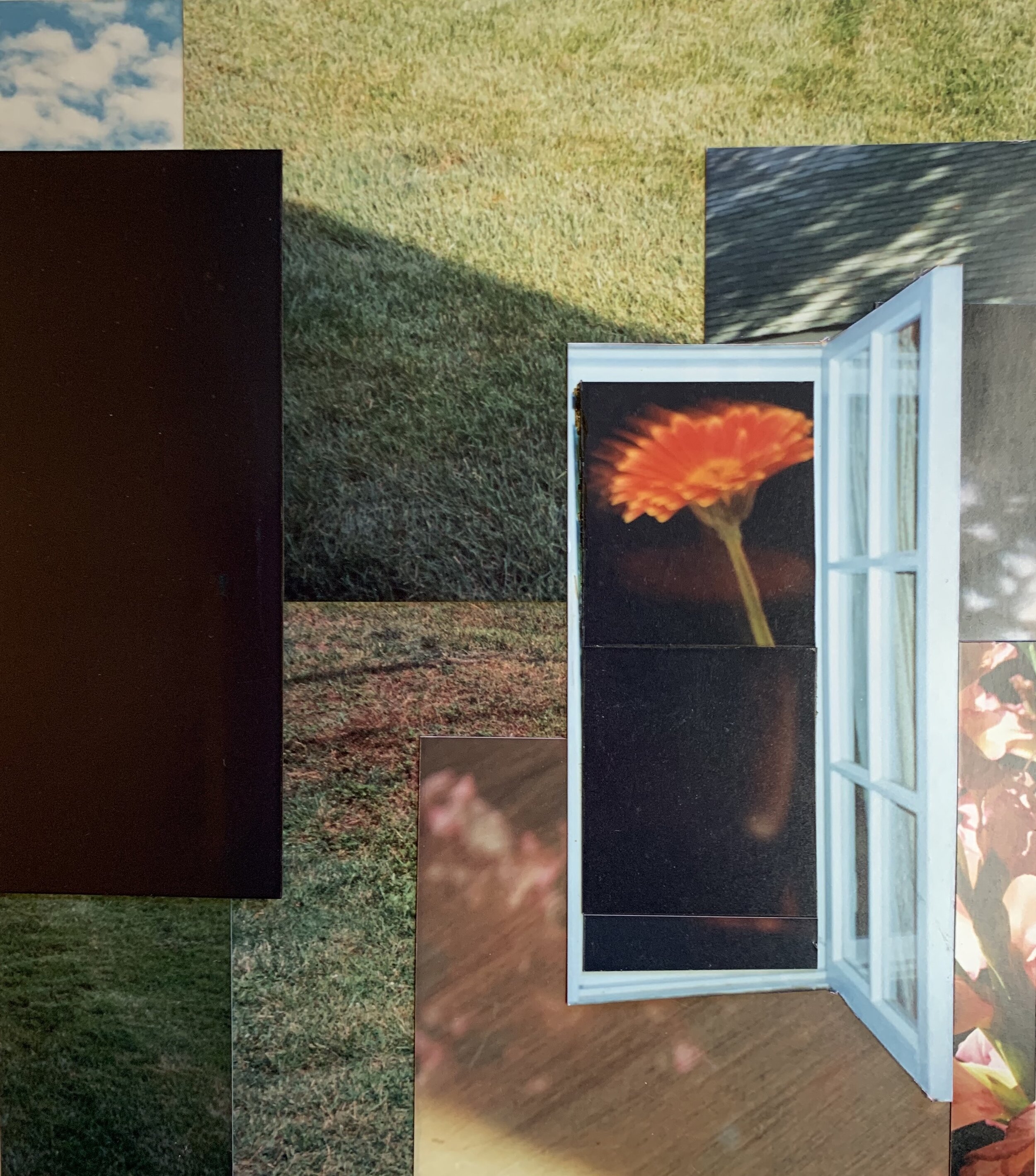A Compound Eye
Peggy Gale, July 2001
The photographic works of Gabrielle Israelievitch are intimate and revelatory, gifts to be shared. Delicate and personal, they seem to be secrets held close yet offered here in exchange, as if being given they will return, multiplied.
Israelievitch works with simple means, her 35mm camera always at hand. She begins with quick snapshots taken easily: shadows falling on the street or in a garden, views of a beach, the turn of a chair arm, windows or doors glimpsed in passing. Water rushing to meet clouds. Reflection and cast shadow are revisited over and over, captured in tree branches and floral patterns as a musing on landscape, then offset by the more formal pleasures of captured shape and line.
These are found views, framed by an educated eye rather that prearranged or constructed in advance for the camera's lens. Decisions of a different sort will follow: the images retrieved are laid out, juxtaposed, cut up and revised. Single images are shifted into new configurations, a poetic commentary unspoken but clearly at work. Before they are complete, however, each composition is re-photographed as a single print, all the elements of its history submerged in a uniform surface with clear and diverse sources.
These are works by a compound eye of sorts, a multiple yet singular "I" that sees, reviews and recomposes to cast meanings in a new light. They are the products of a sensibility seeking junction with the outside world, accepting a found environment and revelling in its variety, its colour, its richness of form and reference. Photography is writing with light, and Gabrielle Israelievitch translates the outer skin of vision to an interior membrane of sensibility and poised meaning. Her compositions are intuitive and affectionate, touched by visual pleasure and sensual response. Their intimacy of scale is in perfect accord with the delicacy of depicted forms.
Israelievitch's titles do more than identify; while naming, they also suggest shades of intention and a possible genealogy. Checkmate, for example, shows a dark human shadow against the cream and sand squares of a checkerboard; the two side images posit slanting rectangles of brilliant white light, cast through windows against soft-hued interior walls.
Another tripartite image is Red House, the top half a section of variegated roofing shingles seen against pale sea and sky, while the bottom half is two separate scenes, one of water lapping against a poolside edge, the other a flat surface of brick-red. We see red, we understand "house," yet the final composition implies additional latent nuances, as if "remembered" somehow.
Some of the compositions remain mysterious, despite their evident source material. In Old Friends, for example, glassy surface reflections play over two overcoats, muted red and greenish-grey, seen side by side; they seem to stand behind a window rather than being laid flat and empty, prosaic as they are. These coat-reflections hover in front of (are framed by) two majestic trees, brilliant red and lush green, the coats as human images played off against nature itself, a duelling of natural cycles, passing from present to past tense. A closer look at the whole, however, reveals two additional strips, foliage of a different sort, masking left side and bottom; all at once the pleasures of connection, deciphering a simple duality, will no longer do at all. Two tiny figures may be deciphered there as well, seated on a park bench, seen "through" the hem of the grey-green coat. Perhaps it is these who are the "old friends." Dualities are revealed in layers here, the possible stories a quiet bonus to the formal pleasure of colour and composition. The work is evocative, elusive, its simple meaning just out of reach.
Self-portrait with Windows is more complex again; the artist is shown from behind in a courtyard as she photographs a battered wall with barred, broken or boarded-up windows. Inset into the surface of the image, however, are several additional windows, or windows onto another world of leafy shadows. The lower three-eighths of the picture shows a backlit French-door interior juxtaposed with a watery surface sprouting blades of grass, reflecting clouds. Or might these clouds be a snowy surface? The windows too may have different origins and stories to reveal, overall a hidden logic altogether.
The poetry of these images is intuitive, wordless, a conjuring of memories (Hope, or Prayer for my Sister) or of deadpan humour (House Boat, with its paired images of beached rowboat and gleaming white house facade). Black Diamonds are glossy squares isolated in a reflective marble floor, paired with rosy images above of mounting cloudforms and receding rivulets through sand. Israelievitch's titles, like her images, are inspired and intuitive, whether selecting a single shape or preferring to elicit subtler ideas. Bluntly descriptive or flickering and insubstantial, their message complements the worlds conjured by the photoworks themselves. Both give a permanence to the fleeting, the just-glimpsed, the fragile almost-known of appearance and emotion in the world. The tangible image captured on paper makes a published writing of this oral history, ready to slip away if unattended. The gift is returned with affection, compounded.







